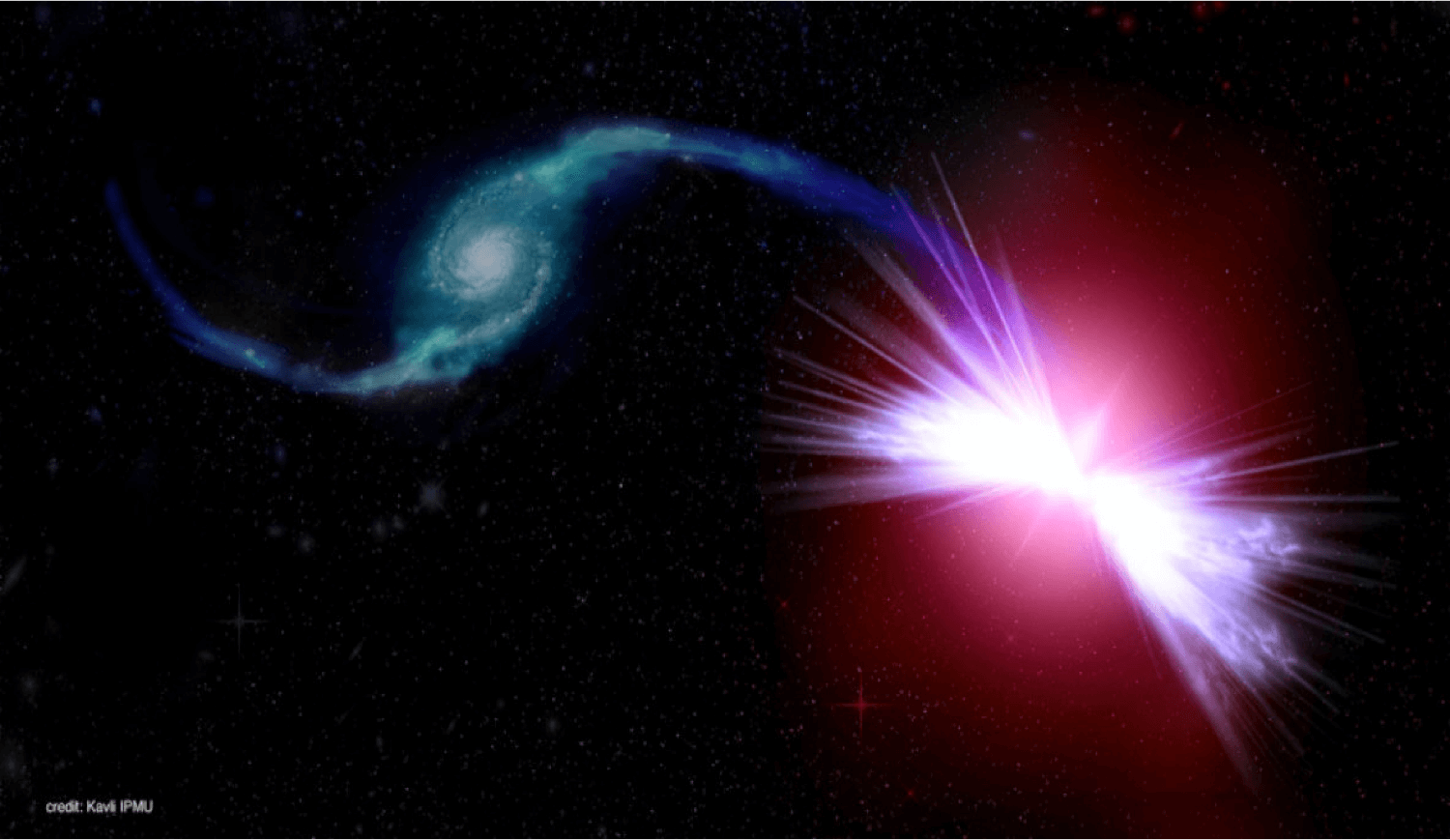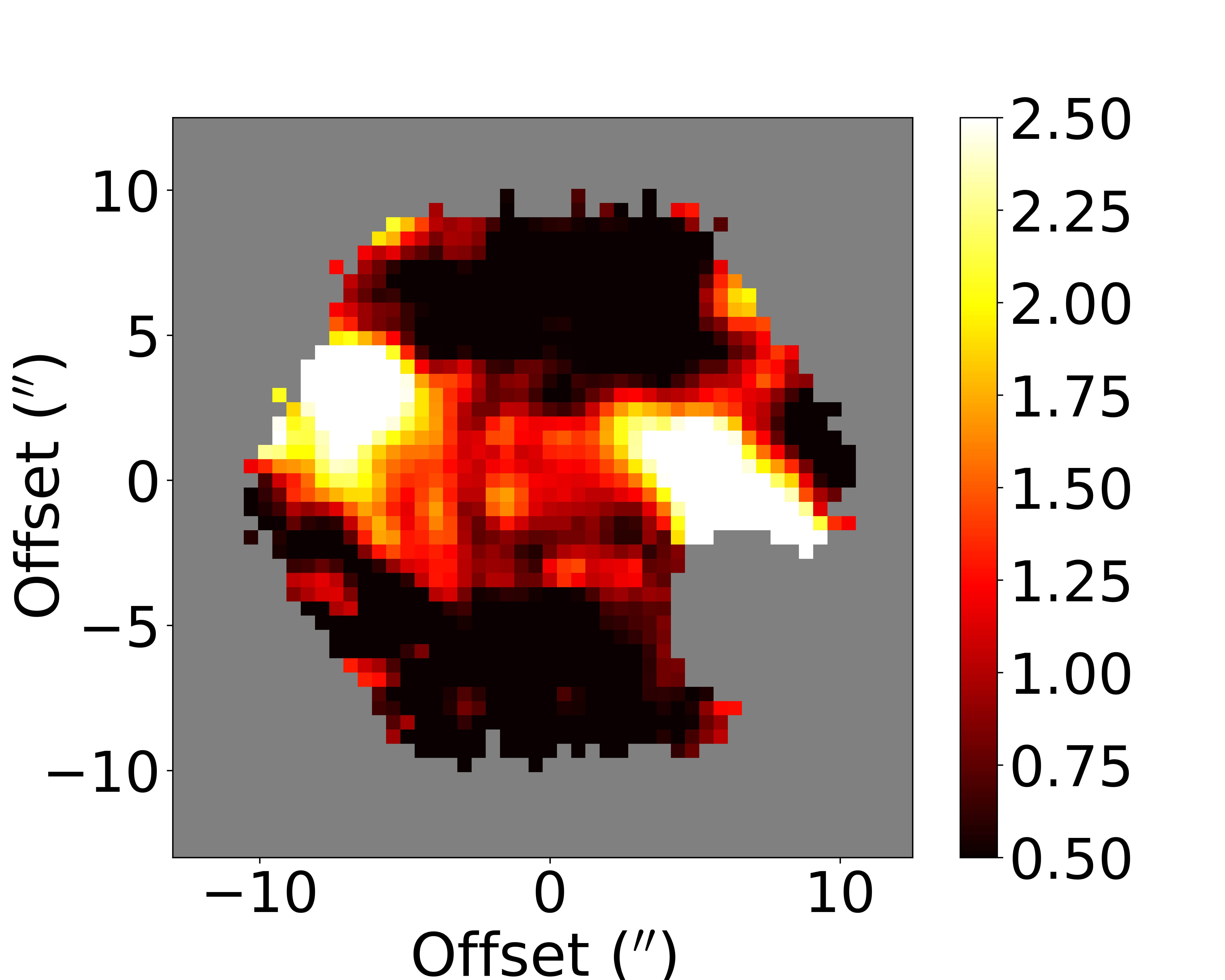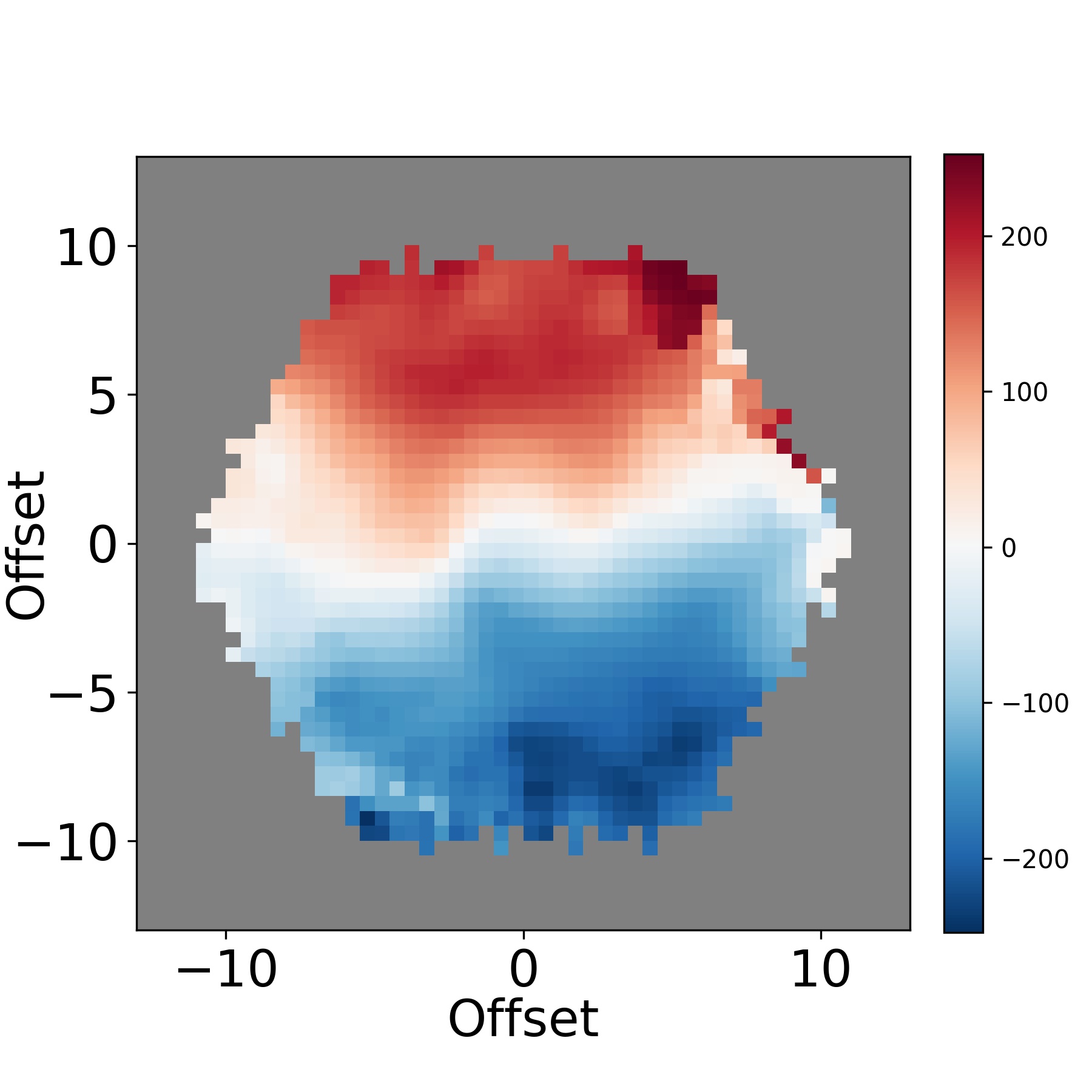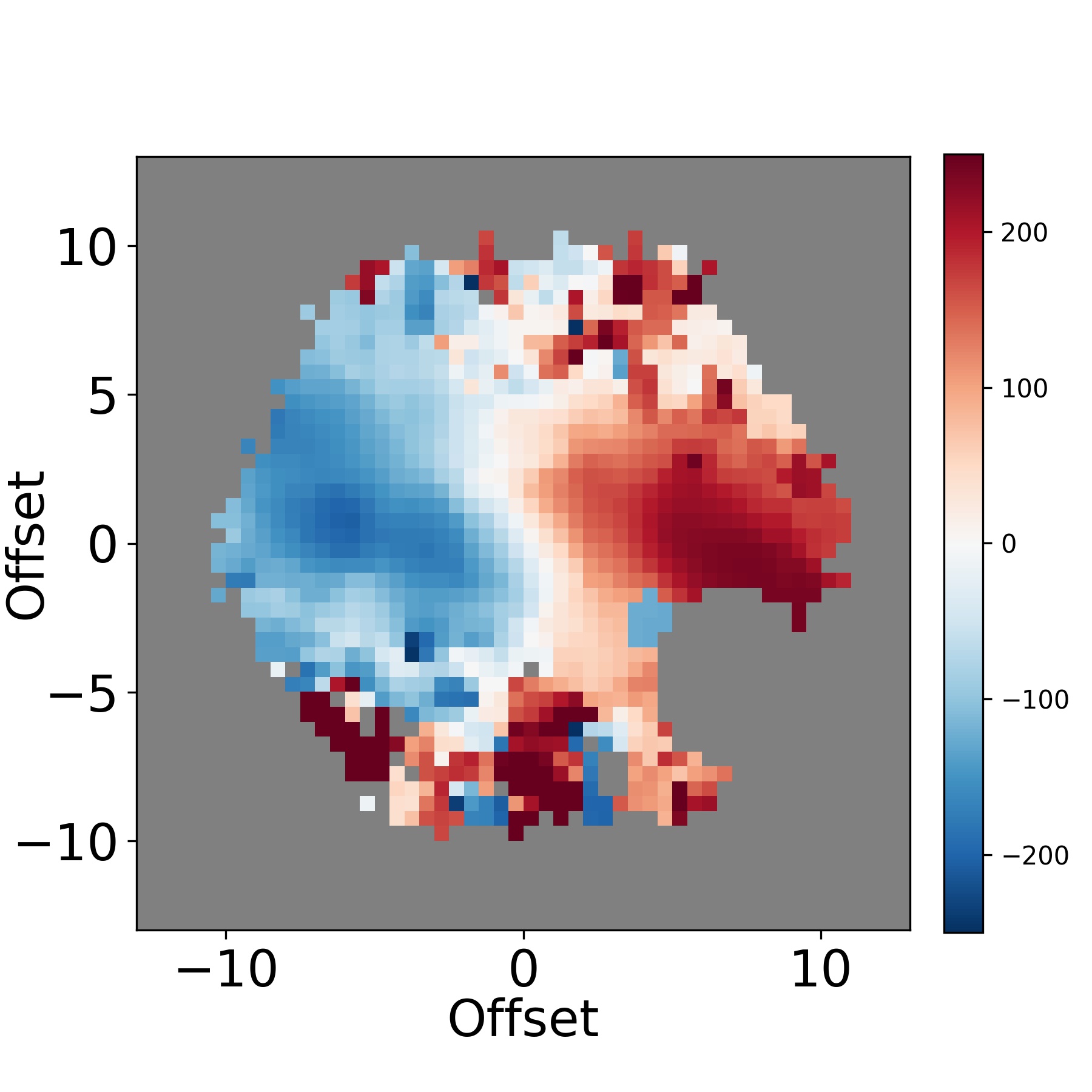Red Geysers : Cheung et al. 2016

Spatially resolved optical IFU spectroscopy from SDSS-IV MaNGA survey (see MaNGA survey page) has revealed a new class of quiescent, early type galaxies, known as 'red geysers' (Discovery paper: Cheung et al. 2016 ). These galaxies have very low ongoing star formation rate but possess unique emission and kinematic properties in ionized gas that may be signalling galactic scale (~ 10 kpc) biconical winds. They are characerized by bi-symmetric pattern in spatially resolved equivalent width (EW) map of strong emission lines like Hα (see examples below).


These extended ionized gas emission features roughly align with the gas kinematic major axis, but show significant mis-alignment with the stellar kinematic axis. The spatially resolved gas velocity values reach high values, typically reaching a maximum of 300 km/s, which are greater than the stellar velocity values by a few factors. The ionized gas velocity maps (for the same galaxies as above) are shown below.


They also show high gas velocity dispersion, reaching ~ 220-250 km/s in distinct parts of the galaxies. They exhibit predominantly LINER or Seyfert type line ratios in the spatially resolved BPT diagram. Currenty, from the MaNGA Product Launch 9 (MPL-9) sample, we have 140 red geyser galaxies. For more detais on the sample, check out Cheung et al. 2016, Roy et al. 2018, Roy et al. 2021.